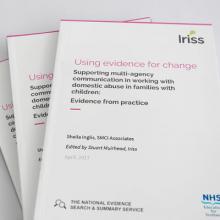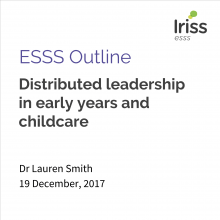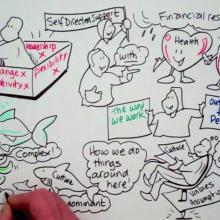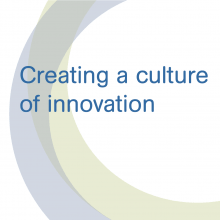Scottish social services organisations face major challenges over the next 10 years
In 2007, the social care costs resulting from alcohol misuse were estimated to be between £114.2 million and £346.8 million (mid-point £230.5 million), with almost all of these costs relating to children and families (Scottish Government, 2009).
Parental substance misuse in Scotland is a widespread and serious problem, with current best estimates showing that up to 65,000 children under the age of 16 have a parent with an alcohol problem (Scottish Government, 2009).
In addition, parental substance misuse is a key factor in many children and families' social work cases, with various reports setting this figure between 20% and 78% of cases (Templeton et al, 2006).
On the 31st March 2009, 15,288 children and young people were looked after by local authorities in Scotland, a number that has increased every year since 2001 and is at its highest since 1983 (Scottish Government, 2010). Despite care leavers accounting for only 1% of the overall population, these children and young people too often go on to experience lives characterised by unemployment, homelessness, mental illness and addiction (Robson, 2008).
There are other prevailing long-term conditions that affect social work expenditure. For example, according to the Reshaping Care work of the Scottish Government, if current models of care and support for older people do not change to be less dependent on state provision, the present care budget of £4.5bn will need to rise by £1.1bn by 2016, and a further £3.5bn by 2031 (Joint Improvement Team, 2011).
Not only are there long-term pressures of demographic change, there are also tighter spending constraints and rising demand created by the recession. This is compounded by rising expectations that people using services deserve a better experience, putting mounting pressure on staff to 'do more with less' and to deliver significantly better outcomes for lower costs.
Current arrangements are not sustainable; nor are they, in many instances, desirable. Social service organisations are consistently being told that 'more of the same won't work' (Scottish Executive, 2006), which is a daunting challenge for most and can feel like an insurmountable ordeal for many.
Challenging the status quo: bringing new ideas, new ways of looking at services, and new ways of working that are different to what existed before - Iriss
How can we respond to this challenge?
Looking inwards, retrenching and making efficiencies is not going to be enough to weather this financial storm.
Perhaps a way forward can be found by rethinking and reframing what we mean by social services. Albury (2005) argues that it is only through a process of innovation that public services can shift out of this 'one-size-fits-all' approach to a more personalised mode of provision (see also Mulgan and Albury, 2003), building services around a person's requirements rather than shoehorning them into an organisation or structure.
Much of the literature on innovation treats its importance as essential for developing new (and sustainable) solutions, and indeed, for organisational survival (Tidd, Bessant and Pavitt, 2005). Research shows that it is in times of financial stringency that the attention shifts to innovation, often because there is no other option (Audit Commission, 2007).
Amongst other things, innovation is considered vital for:
- Reducing costs
- Increasing productivity
- The organisation's ability to adapt to changing environments (which may be legislative, technological, social, economic, and physical)
- Breathing new life into slowing or stagnant areas
- Facilitating entry into new markets
- Encouraging an organisational culture of creativity
- Taking new approaches
- Offering new techniques (Hargadon and Sutton, 2000; Damanpour and Gopalakrishnan, 2001; Goyal and Pitt, 2007).
There are decades of research exploring innovation, more recently in the public sector (Newman et al., 2001; Walker et al., 2002; Bartlett and Dibben, 2002; Albury, 2005; Osborne and Brown, 2005; Rashman and Radnor, 2005).
Numerous frameworks have been developed to help us understand and find meaning in the concept (Borins, 2001).
At IRISS, we believe innovation can be radical or incremental, but either way it implies a real change in how work is done, using new knowledge, organisation or processes to develop changes in the ways we deliver support to people.
Incremental change tends to involve the development of the existing services - constantly looking for better, more efficient and desirable ways to complete a task or process, but representing continuity with the past (Osborne and Brown, 2005). By contrast, high levels of uncertainty are the hallmark of truly radical innovative projects and ideas. Within any organisation, it is important to ensure there is a mix of both approaches to effectively tackle the increasingly complex and varying demands from users of services.
We believe that the Young Foundation's framework for innovation is useful (2010).
It asserts that innovation can be:
New to the place
a good idea that has been taken from one place and applied in another. For example, taking an economic model from one place and applying it in a different way. Caring Relationship Tickets is a Japanese community currency created in 1995 so that people could earn credits helping seniors in their community. The basic unit of account is an hour of service to an older person.
Sometimes seniors help each other and earn the credits; other times family members in other communities earn credits and transfer them to their parents who live elsewhere.
For more information: Fureai kippu
New to the sector
ideas from industry applied in another sector. For example, using creative processes developed by designers for product development and applying these to designing services such as in the ALISS (access to local information to support self-management) project. The ALISS project ran an open innovation process using final year design students and people living with long- term conditions, staff from NHS Scotland, Scottish Government and the voluntary sector to produce new ideas for improvement.
New to the scale
small ideas used in one place, scaled up to increase the social impact of an idea.
For example, Education Extra (now renamed ContinYou4) started off as a small charity initiative that aimed to understand the benefits of after-school activities and promote their importance in the UK. Through regional partnerships, it supported small pilots and created an enthused network to promote extended schools activities. With the support of schools and strong evidence of effectiveness, government funding has been secured to expand and pilot the initiative further.





